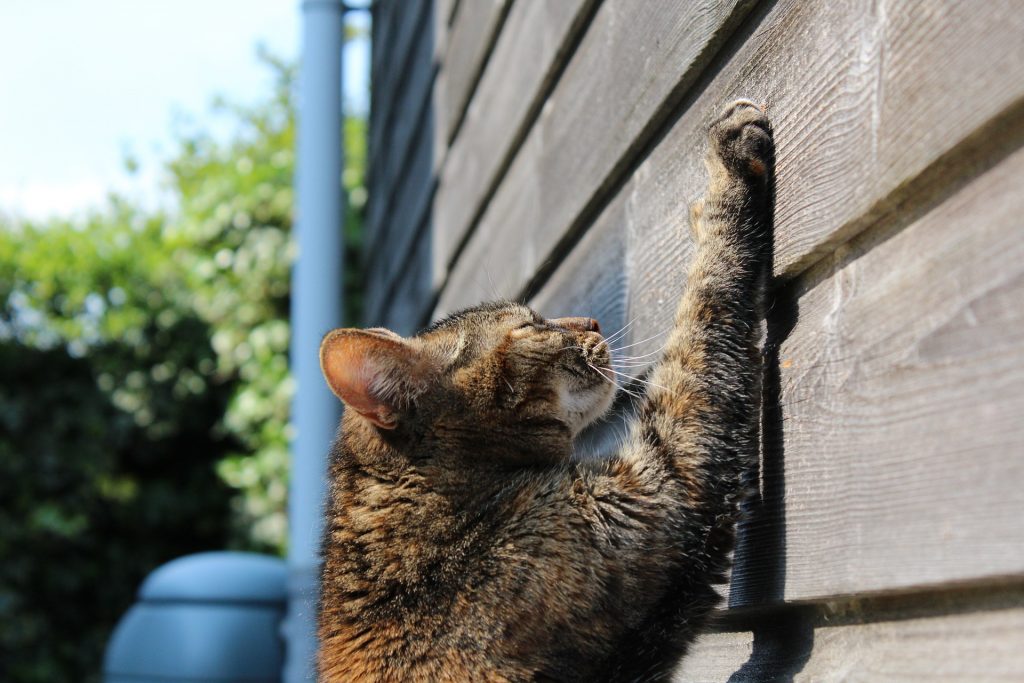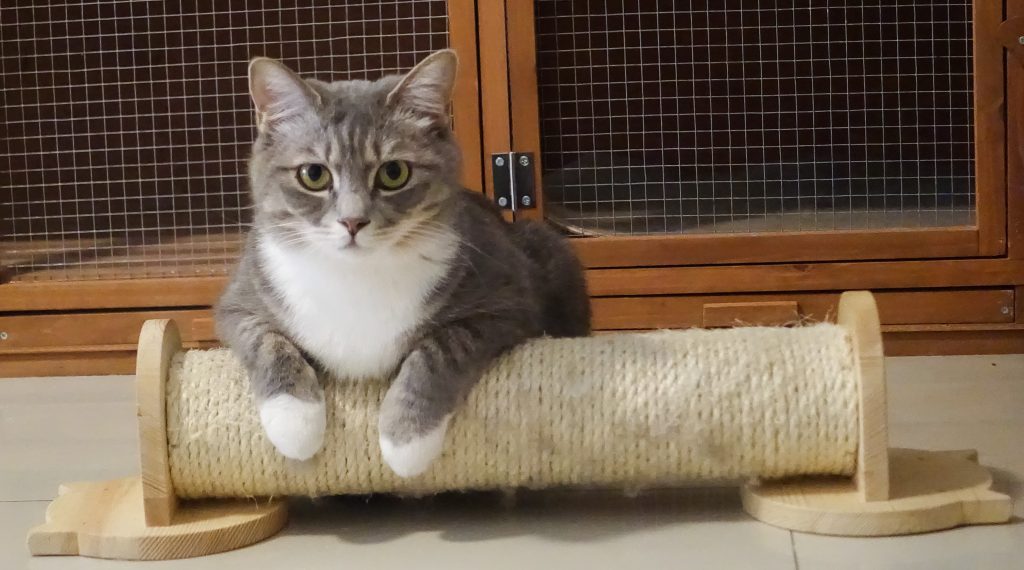Owning a cat requires some lifestyle adjustments. Some are easy adjustments… such as the rapid muscle growth in both arms from carrying around 40 lbs of kitty litter. While others, like your cat’s natural instinct to destroy all your furniture, are slightly harder to handle. Have you ever wondered why your cat scratches your furniture?
The good news is that humans and cats are both intelligent animals, and as intelligent animals, we can learn. The key to solving this problem is learning why your cat has the need to scratch and teaching them where it’s appropriate to exercise that need.
Your Cat Scratches Your Furniture Because Of Natural Instincts
Why is your precious little kitten, with those huge eyes and super soft fur, clawing your area rug to shreds? The answer is simple; her body is telling her to. House cats are descendants of large cats, and large cats use their claws to hunt lest they starve. They have an uncontrollable desire to keep their claws sharp and healthy. When your cat scratches something, she is polishing away the dead flakey outer layers of her nails, thus sharpening her claws. This is an essential practice for all cats, and if your goal is to stop them from ever doing it, please know that that’s a fruitless endeavor.

Is the solution declawing? Probably not. It is true that once the claws have been removed they will no longer be able to harm your household items. However, they will still have the urge to scratch only now it is likely to be painful. Declawing is a surgical procedure in which the top part of the finger bones is removed, preventing nails from growing. There are many negative side effects attributed to these procedures, and there are a growing number of vets who strongly discourage the practice. The choice is ultimately yours, but we urge you to do your research and consult your vet before making the decision.
How To Save Your Furniture From Cat Scratches
So what can we do? Will your cat and your furniture ever learn to get along? Cats are going to sharpen their nails and when looking around your living room, furniture is certainly the most obvious candidate. The solution, then, is to offer more enticing choices for your cat.
Furniture
It’s not enough to have a small scratching post in the corner of a bedroom. You will need to have acceptable scratching options in plain sight and in abundance. If your living room has a tall cat condo as well as a cardboard scratcher in the corner and short pole scratcher on the other side of the room, your pet has all the alternatives she needs to leave your furniture alone.
Teach Your Cat The Ways
Having the right furniture is only half the battle. Now you must take the time to train your feline friend in appropriate behaviors. (The best time is when you first bring home your pet before they have time to form the bad habit of scratching certain furniture pieces.)
 The goal with training is to get your cat acclimated to the new pet furniture and help them realize these new items are meant for them. Place the new pieces in the center of the room where your cat can easily see them. Spend some time playing with your cat on the items, dangling a toy from the top or dragging little feathers up to the highest perch. It can also prove helpful to sprinkle some catnip on the furniture to encourage them to spend time on them. Pro-Tip: vary up the styles and textures of your pet’s new scratching toys. Try both tall cat trees and smaller pieces as well as incorporating rope, carpet, and cardboard textures. You may find your pet likes one style more than the other, but having several options on hand in key locations can only help your efforts.
The goal with training is to get your cat acclimated to the new pet furniture and help them realize these new items are meant for them. Place the new pieces in the center of the room where your cat can easily see them. Spend some time playing with your cat on the items, dangling a toy from the top or dragging little feathers up to the highest perch. It can also prove helpful to sprinkle some catnip on the furniture to encourage them to spend time on them. Pro-Tip: vary up the styles and textures of your pet’s new scratching toys. Try both tall cat trees and smaller pieces as well as incorporating rope, carpet, and cardboard textures. You may find your pet likes one style more than the other, but having several options on hand in key locations can only help your efforts.
Of course, even with our very best efforts, occasionally cats will refuse to take the hint and continue to scratch your furniture to pieces. Cats can be stubborn. But there are some helpful tips to discourage scratching where it shouldn’t happen.
Deter Them From Your Furniture
Many pet owners have found success with temporarily using a common household item, foil. Simply wrap the problem area with foil. Cats do not like the look or the feel and will generally seek alternatives. Once you feel they have formed the habit of using the alternatives scratching surfaces you can remove the foil.
If the foil isn’t working, let’s try some special tape, made specifically for this common cat woe. Many pet stores sell a double-sided sticky tape that you can apply to your cat’s favorite scratching spot.
There are more permanent solutions as well.
- There are several sprays on the market that are not harmful to cats but contain smells they do not appreciate. Simply spritz your furniture with some of these sprays, and the cat should leave them alone.
- You also have the option to purchase scratch protectant furniture covers that can be applied to the parts of your furniture the cat frequently attempts to scratch.
- Please do not spray your cat with water bottles to discourage the behavior, it will only frighten them and make them anxious.
It’s important to keep in mind is that you love your cat, and although their habit is destructive, they are doing nothing wrong. They are simply doing what their bodies are programmed to do. With a little understanding of why the behavior is taking place and some well placed alternative scratching surfaces, your feline and your furniture will be happy roommates in no time.

